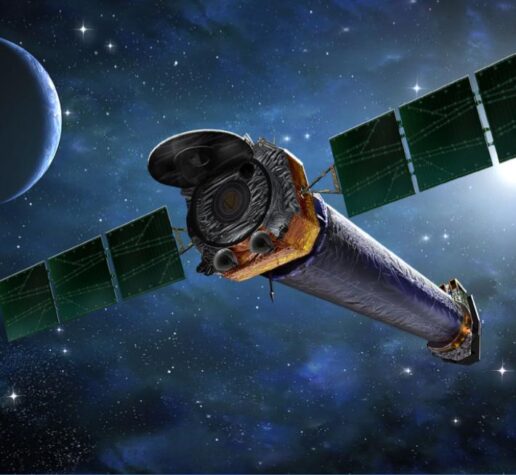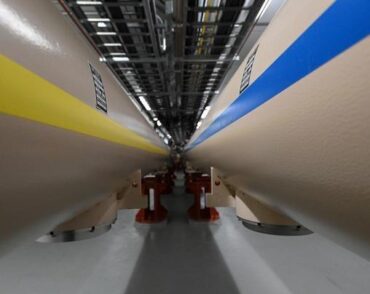
NASA’s budget cuts for the Chandra X-ray Observatory could leave a gaping hole in the field
Canizares: “The community needs Chandra.”
From the Greeks to Galileo, from the Bablyonians to Brahe, the pursuit to understand the cosmos is as old as civilization itself. We went to the Moon, landed rovers on Mars, and did more than just stare at the night sky because we sought discovery. In exploring what’s up there, we were able to understand, launch by launch, photograph by photograph, a bit of how we came to exist.
The Chandra X-ray Observatory, launched in 1999, contributes a unique perspective with X-ray imaging capabilities. Chandra has shaped our understanding of deep space over the decades; it can distinguish whether the center of a galaxy holds one or two separate black holes, image the remains of exploding massive stars, and provide direct proof of dark matter, all with astounding clarity.
After 24 years, however, Chandra is in danger. NASA’s recently released budget plan for the next 5 years drastically erodes funding for Chandra to nearly nothing. In other words, NASA plans to terminate the program—and hundreds of scientists around the world are furious.
Chandra can see what we can’t see. It analyzes light in the X-ray region, which is invisible to the naked eye. Chandra has revolutionized understanding of the X-ray universe, having a far higher resolution than any other X-ray telescope ever built. David Huenemoerder, a research scientist at MIT Kavli Institute for Astrophysics and Space Research (MKI) since 1992, compares the resolution of other telescopes to “taking your glasses off. Instead of seeing 10 things, you see one big blob.”
Catherine Grant, a research scientist who has been at the MKI since 1999, states that Chandra’s images “are both beautiful and help us understand how elements important to life are created and spread throughout the universe.”
Chandra’s data is used worldwide today but has had intimate ties with MIT since its inception. Two of its four instruments were developed at MIT. A group led by Claude Canizares, former director of what is now MKI*, built the High Energy Transmission Grating Spectrometer, which precisely determines energies of the X-rays reflected from the telescope’s mirrors. The Advanced CCD Imaging Spectrometer, which aids in imaging X-rays, was built with the bulk of testing and calibrating being done on the MIT campus, according to Grant, who has been on the ACIS team since 1999. The CCDs (charge coupled devices), which are the photon detectors on the telescope, came directly from MIT Lincoln Labs.
*The MIT Kavli Center was previously the Center for Space Research
“Spectroscopy puts the ‘physics’ in astrophysics,” Huenemoerder said. “If you look at people who are using Chandra to do spectroscopy, a great fraction of them came through here at MIT. That shows you the heritage and the role that MIT has had in this field.”
Professor Robert Simcoe, current director of the MKI who does not work on the Chandra mission, states, “X-ray astronomy has been linked with MIT for 60 years—one could argue the field was invented here. Chandra in particular has been a flagship for over half this era, sustaining a vibrant research environment with multiple generations of students, postdocs, research scientists and faculty.”
The proposed funding cut would promise an abrupt end to Chandra’s profound impact on astrophysics—both the research and the scientific community built around it.
In 2023, NASA’s budget for Chandra was $68.3 million. Last year, a similar amount was requested for 2024, and the budget was projected to increase. However, the latest requests from this year’s estimates for funding dwindle from $41.1 million in 2025 to $5.2 million in 2029.
Canizares shares, “I was taken by surprise by the sudden budget cut, especially after NASA’s own ‘2022 Senior Review.’” NASA’s senior review is conducted every three years, its goal being to assess the scientific return of missions to advise future projects within a constrained budget. In the review, Chandra received the highest ranking, Tier 1, along with Hubble.
Hans Moritz Guenther, research scientist at MKI responsible for MARX, a program that is used to simulate what Chandra would see, shares the same sentiment. “I know that Chandra won’t work forever, but I never even considered NASA to propose to end a mission that has the highest marks without even conducting another senior review.”
NASA’s reasoning for the funding cut states, “The Chandra spacecraft has been degrading over its mission lifetime to the extent that several systems require active management to keep temperatures within acceptable ranges for spacecraft operations. This makes scheduling and the post processing of data more complex, increasing mission management costs beyond what NASA can currently afford.”
The trend of budget cuts from NASA are no surprise. In recent years, Congress has gradually reduced funding for NASA: in 2024, NASA will receive 24.875 billion dollars, 2% less than what it received last year and 8.5% less than 27.185 billion dollars requested. This leaves them with the difficult choice of either funding new missions or supporting existing ones.
Researchers on Chandra, however, firmly disagree with the report about the extent of Chandra’s degradation. Canizares states, “Frankly, NASA’s explanation has outright errors, which we’ve been quick to point out.”
The issue of thermal control comes from something—what, exactly, is not known— building up on the detectors, which have to be kept cold to function properly. Operations are slightly more difficult due to the concern of the electronics overheating. “[Chandra] used to be able to stare at one place for a day or more. Now you can’t do that,” Huenemoerder states. To circumvent this problem, Huenemoerder said, “You can point at this object for half a day, go somewhere else, then come back, and keep collecting data.”
While operating the telescope is undoubtedly more complicated than at its inception, the observational efficiency remains “nearly as high as it was at the start, due to clever work by the mission planning and engineering teams,” Grant claims. Chandra’s mission management even disagrees that these thermal controls have a financial impact.
In contrast, the cost of losing Chandra may be devastating, for the people and the field as a whole.
“At any one time in Chandra’s history,” states Guenther, “there were several faculty members and at least a dozen research scientists working on or with Chandra at MIT.” Across the Greater Boston area, almost 200 people are employed to run Chandra, process data, produce images, and share information with the scientific community and the general public.
“There are insufficient jobs in other projects to absorb all these newly unemployed people—many of them would leave the field entirely which would be a regrettable loss of expertise,” Grant explains. Current PhD students just entering graduate school with hopes of conducting research with Chandra are also at risk.
From a scientific lens, a major factor contributing to the impact of losing Chandra is that the spatial resolution it provides will not be available again for decades. There are no existing telescopes that come close to Chandra’s capabilities, and there are no plans to build a successor that can replace it for two decades, leaving a gaping hole in the X-ray field.
Two other Great Observatories that were launched in the same period as Chandra, the Spitzer Space Telescope and the Compton Gamma Ray Observatory, have already been shut down, but have had successors. Spitzer could no longer point its antenna to Earth and receive light on its solar panels at the same time, and was superseded by the James Webb Space Telescope a year later. Similarly, Compton’s gyroscope failed and had successors, namely, the Swift and Fermi Gamma Ray satellites. With no successor or obvious deficiencies, accepting the decommissioning of Chandra is a tall demand.
Simcoe highlighted the potential for the curtailing of the Chandra project to impact America’s leading role in exploring the frontiers of space with X-rays: “Many compelling X-ray experiments in recent years are now being spearheaded and launched from outside the US. If this trend continues, the US will be at risk of losing our historical leadership position in this field.”
Scientists are adamant about keeping Chandra in commission. According to Canizares, “more than 700 astronomers (world-wide) signed a letter requesting that NASA reconsider the decision.” In March 2024, the coalition #SaveChandra.org was organized by community astronomers.
Meanwhile, given that the budget cannot be augmented anymore this year, MKI is assessing how the Chandra team can continue to operate under the reduced budget—including whether the observatory “can continue to operate if the most extreme versions of the prospective budget cuts are implemented,” according to Simcoe.
To this day, “Chandra continues to make new, unanticipated discoveries. When Chandra was launched, we did not know about exoplanets, could not detect gravitational waves, and could not peer into the stellar nurseries in the far infrared,” Guenther stated.. “A versatile, general-purpose observatory like Chandra, that complements other instruments with capabilities that no other X-ray telescope can match, will continue to make important discoveries.”
The sentiment for retracting future budget cuts remains clear. Grant shares, “the astronomical community certainly hasn’t run out of ideas for using [Chandra].”
“The community needs Chandra,” Canizares asserts.


